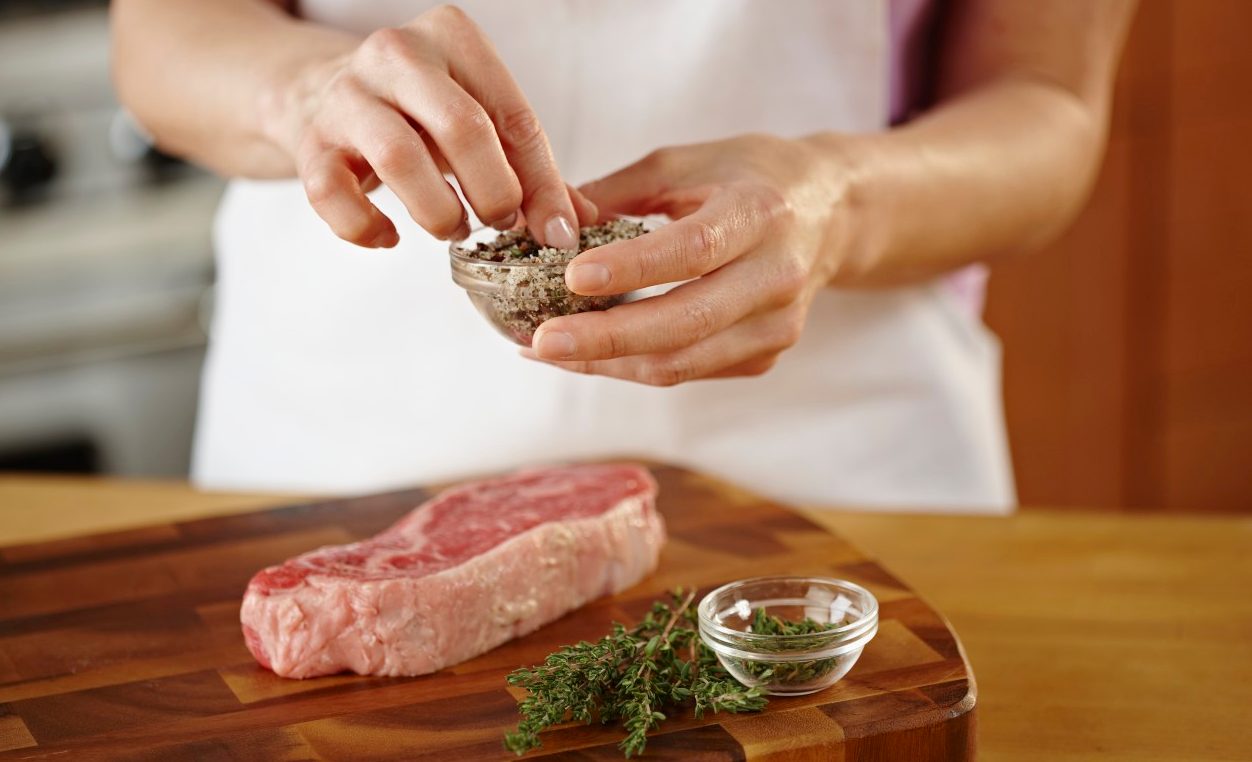The Basics of the Paleo Diet

Eating more like our ancestors may be a prescription for regaining and maintaining our health. Here's what you should know about the basics of the Paleo diet.
The Paleo diet — sometimes called the Stone Age or caveman diet — has steadily gained attention and popularity over the past decade. The basics of the Paleo diet are based on the idea that we thrive when we eat as our hunter–gatherer ancestors did during the Paleolithic era, or Stone Age. In fact, it’s not a “diet,” but a lifelong way of eating to reduce your risk of chronic disease, which many believe is caused by the newer parts of a modern diet.
The diet is often described as simply sticking to meat, vegetables, fruit, nuts, and healthy fats — which is true enough — but an equally important goal of the Paleo diet is to get away from highly processed foods, focusing instead on nutritionally dense whole foods.
YOU MIGHT ALSO LIKE: Eating Like a Cave Person
“It’s going back to the basics,” said Dani Abrahams, research assistant at the Winchester Chiropractic and Wellness Center in Centennial, Colo. “The paleo diet is such a true natural way to eat.”
Abrahams, 41, has her master’s degree in biochemistry and is studying to get her PhD in clinical nutrition. Her passion is environmental toxicology. She explained that we really don’t need carbohydrates to survive. If you look at the fundamentals of the Krebs cycle — the chemical reactions in our body that convert food into energy — you’ll find your body will convert protein into what it needs, she said.
“With all of the grains being introduced into our system, we’re seeing more diseases.” Our bodies convert carbohydrates into sugar. “And that causes inflammation. That’s what’s causing disease, and the Paleo diet really does get away from that.”
Of course, there are limitations. A fast-food beef patty wrapped in a lettuce leaf isn’t Paleo. Bacon isn’t Paleo. Although both are meat, they are also highly processed. Why does this matter? Unprocessed foods are much more nutritionally dense, providing significantly more nutritional bang for your caloric buck.
The basics of the Paleo diet
In short, if you’re following a Paleo lifestyle your diet consists of:
- Grass-produced meats
- Fish and seafood
- Fresh fruit and vegetables
- Free-range eggs
- Nuts and seeds
- Healthful oils (olive, walnut, flaxseed, avocado)
Emphasis is placed on eating healthful foods with beneficial nutrients like soluble fiber, phytochemicals, antioxidant vitamins, omega-3 and monounsaturated fats, and low-glycemic carbohydrates, which are more slowly digested. Eating organic as much as possible is also a fundamental Paleo premise.
Paleo foods list
- Whole grains
- Dairy
- Refined sugars
- Saturated and trans fats
- Salt
- High-glycemic carbohydrates
- Processed foods
A diet heavy with foods containing these ingredients has been shown to cause cardiovascular disease, type 2 diabetes, weight gain, and some cancers.
One of the features that sets Paleo apart from other “whole foods” diets is its exclusion of all beans, legumes, and grains — not just those containing gluten (wheat, rye, barley). Not only are many of these foods high on the glycemic scale (especially if they’ve been processed), in many cases, they’re low in micronutrients, high in antinutrients (compounds that interfere with the absorption of nutrients), and are believed to cause chronic inflammation and stimulate autoimmune dysfunction.
The concept of the Paleo diet emerged in the mid-80s as a research paper appearing in the New England Journal of Medicine. It was later popularized by Loren Cordian, PhD, who published his original book “The Paleo Diet” in 2002. The book was updated and re-released in 2012.
The premise of the diet is that our current way of eating is responsible for many of the chronic health conditions and disease that have appeared in recent history. This is happening because changes in our diet have occurred faster than our ability to evolve to accommodate them. Going back to eating the way our ancestors did is a logical way to regain our health.
“No one is getting better. People are getting more sick. And they don’t think nutrition has anything to do with it? It boggles my mind,” Abrahams said.
Who would benefit
Research conducted about how a Paleo-type diet affects health has shown favorable results such as weight loss, improved blood pressure, blood fat and blood sugar levels, and better insulin sensitivity. If you are at risk for or have developed cardiovascular disease, type 2 diabetes, or high blood pressure, adopting the principles of the Paleo lifestyle could improve your condition. Likewise, if you have celiac disease or are gluten intolerant a Paleo diet could be beneficial.
Although critics say there isn’t enough evidence to support health claims of the Paleo diet, new research refutes this. Some also say that a diet so reliant on meat may not be heart healthy. However, recent research has found that fresh meat doesn’t have the negative cardiovascular effects once thought. But processed meats like sausage, bologna, salami, and bacon do pose a risk. Because of the diet’s reliance on meat, it wouldn’t be appropriate for vegetarians. With a simple shift, you not only remove the foods at odds with your health (grains, legumes, and dairy) but also increase your intake of vitamins, minerals, and antioxidants.
You can easily find many websites, books, blogs, and articles to guide your exploration of a Paleo lifestyle and find recipes and support. If you suffer from any of the health conditions commonly associated with a Western lifestyle, it may be worth your while to get in touch with your inner cave dweller.
Updated:
February 24, 2020
Reviewed By:
Janet O’Dell, RN